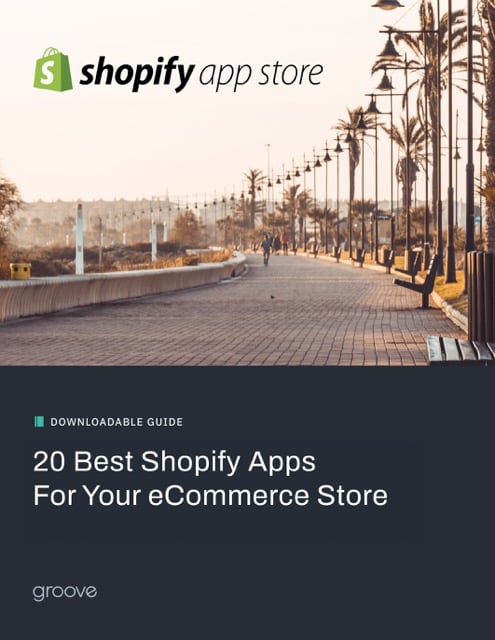Why Sell Food Online?
In eCommerce, brands are constantly searching for new ways to make their products accessible to new markets. By offering your perishable products directly to consumers outside of your existing in-person sales channels, you will earn new brand champions without sacrificing profit margins to middle-men and chain grocery stores.
If you are currently selling your food and beverage products in-store with little to no online presence, we are here to help. At Groove Commerce, we are experts in overcoming any and all perishable product challenges with beautiful and functional online stores.
Brand Awareness
The foremost reason why brand new customers won’t purchase your food and beverage products is simply put; that they don’t know about them!
You may currently offer your product in select locations limited by big-box store shelf space or geographical location. Even after leveraging geographically-based advertising, your target audience is extremely small relative to the total number of potential customers who are willing to try products they find online.
Online advertising in conjunction with a stunning eCommerce site equips merchants with a wide net that can capture new first-time customers. Brands can then assess new geographic market opportunities to offer their products in-store.
Customer Distance
The second largest sales barrier for brands that only sell in-store is a potential customer’s distance from a retail location that carries the product.
Imagine a life-long Pennsylvania resident taking a trip to Seattle and while there, uncovers their new favorite ice cream sandwich. Unable to purchase more products after returning from their trip, this primed-to-purchase repeat customer is essentially lost. In the best-case scenario, this person will have to wait until the next time they visit the pacific northwest for another special ice cream sandwich.
By offering a frozen food product like this online, a customer willing to pay the associated costs will be able to enjoy it from the comfort of their home all year long.
Large Quantities & Catering
Imagine super-fans of your brand are looking to serve your frozen products during their next family reunion. Without a direct-to-consumer eCommerce channel, this potential large-order customer would be forced to purchase all of the products they would like at a physical location.
Even if this action is taken, the customer would then need to find a way to keep these treats frozen until it is time to serve them. For most households in the United States and across the world, a spare freezer is not available. To overcome this, the purchasing customer could leverage a large cooler - which could work for 6-8 hours in a best-case scenario.
By offering your products online, consumers can buy the full quantity they would like to be delivered on the exact day (or the day before) that they need it. Learn how our team created the highest-converting delivery date selection calendar available to BigCommerce merchants from our recent blog.
Perishable Challenges
There are seemingly limitless use-cases for selling perishable products online. However, this doesn’t mean that there are no challenges associated with an implementation of this kind. Let’s first cover what those issues are. Afterward, we will speak to how our agency has worked to successfully overcome them for our clients.
Shipping Requirements
Depending upon the perishable food products that you will be selling directly to consumers, a series of shipping issues will present themselves. The foremost issue to consider is how cold, and for how long your products will need to be stored. This is a multifaceted issue, as the time for which the product needs to be thermally stable will impact both weight and package dimensions - which will impact shipping cost - which will impact shipping time - which will impact customer satisfaction. The list of effects from these shipping requirements goes on for quite a while.
You will need to individually assess each of these issues to how you will deliver products to your customers. We often find that retailers leverage a tool such as Shipper HQ to determine standardized shipping options that correlates to the average order size of their in-store customers. These standardized shipping materials then get shipped via 2-day mail (you can additionally offer 1-day or same-day delivery if needed) to ensure the products stay fresh and retain the required internal temperature.
Implementing standardized shipping methods will not only reduce shipping material costs but will require fewer freezing and/or cooling packs due to the reduced transit time.
Shipping & Packaging Processes
For brands that typically send products from a singular distribution warehouse to locations across the country, implementing a D2C workflow is a new muscle to exercise.
Creating an entirely new packaging product line could be too large of an investment for some brands to undertake. In conjunction, it is often uneconomical for perishable goods brands to sell singular servings of their products online due to the associated shipping costs. When these two factors are considered together, it opens a very unique packaging opportunity.
Retailers are often able to leverage existing production lines when shipping to online customers. Calling back to our ice cream sandwich example above, it may be common that these ice cream bars are sent to locations in boxes of 30. If this imaginary brand was to only offer their products in 30-item increments, these historically B2B packages could be shipped directly to customers for their next large party or event. By sharing the cost of shipping across many products together, the consumer will be more likely to purchase as shipping cost is shared across many units.
The Solution To Selling Food Online
Choosing the right eCommerce Platform
When considering eCommerce platforms, you have a vast number of options to choose from. Through our 15+ years of experience, we have determined that SaaS solutions best fit the needs of most merchants. Within the bucket of SaaS eCommerce solutions, we have determined two key players that can be adapted to solve the challenges that perishable food and drink merchants face.
BigCommerce
This platform has grown to be one of the top contenders in the eCommerce ecosystem. This platform comes out of the box with everything you need to get your online store up and running. With hundreds of integrations to improve your website, you can bolster your website with any features or functionality you see fit. We have written countless articles on this platform, and as platinum BigCommerce partners, we are a premier agency for creating special online experiences for your customers.
Shopify
Shopify is the most widely used eCommerce platform on the market at the time of writing this blog. While Shopify’s digital advertising takes aim at startups and entrepreneurs, this platform is no slouch for mid-market and enterprise brands. Much like BigCommerce, Shopify offers a massive library of integrations, which they call apps. We are also a Shopify partner agency, having built and maintained eCommerce stores for leading brands.
Technical Debt
In short, with SaaS eCommerce platforms, all of the technical debt historically associated with hosting an online store is essentially reduced to 0. With an on-premise hosted eCommerce store, general upkeep, server maintenance, and security updates are all handled by a paid systems administrator. With the solutions listed above. none of these concerns apply.
Themes & Integrations
Brands can create unified experiences across all types of device screens. Our team of eCommerce-trained designers and developers have implemented dozens of beautiful and dynamic website themes (sometimes referred to as templates). All of the content widgets that we create can be updated, modified, and rearranged by the retailer without any assistance from our team - saving you both time and money.
These experiences can be further enhanced with the use of integrations such as Advanced Shipping Manager, and Shipstation. Read on to learn more about the integrations which help food and perishable product merchants turn website visitors into satisfied customers.
Shipping Solutions
We are huge fans of the native BigCommerce integrations, Advanced Shipping Manager & Shipstation.. In its off-the-shelf state, ASM (Advanced Shipping Manager) allows for detailed shipping rulesets to be created. Shipstation then can ingest this information and automate much of the shipping process for the merchant.
Advanced Shipping Manager
If an order for more than $300 came in, ship the package with a discount code coupon for the customer’s next order in the box. If an order from Kentucky is placed, ensure that it is shipped from the East Coast warehouse.
These are just a few of the rules set examples that can be created in Advanced Shipping Manager. Our team has used this integration’s API to build use-case-specific widgets within BigCommerce stores. These widgets dynamically communicate these shipping rules in a way that ties in perfectly with the site’s styling and design.
For the launch of Dippin’ Dots' first ever eCommerce store, we created a delivery date selection calendar directly inside of BigCommerce’s one-page checkout. One-page checkout systems have proven to increase conversion rates in a significant fashion when compared to a legacy multi-page checkout. By utilizing this tool merchants are able to create a seamless and unified customer journey that promotes conversions and increases customer satisfaction.
Shipstation
If you are an avid podcast listener, you have surely heard of this eCommerce integration. Shipstation takes in the order information as defined by BigCommerce and Advanced Shipping manager. Through user-defined logic, this browser-based software then returns the correct shipping label to be attached to the box.
By removing the manual process of creating and printing each individual order label, the shipping process is rapidly expedited. Additionally, once these two integrations are working together seamlessly, the opportunity for employee error is reduced greatly.
Conclusion
Taking your products from an in-store environment to the online space is a big change. Change, however, doesn’t always need to be difficult. We have helped countless perishable food and beverage brands make this same journey successfully. Reach out to our team of eCommerce specialists today with the form below for a complimentary eCommerce consultation for your brand.

E-BOOK
20 Best Shopify Apps For Your eCommerce Store
Explore tags:
About the author
Subscribe to the Groove Newsletter
Get the latest updates and insights straight to your inbox



